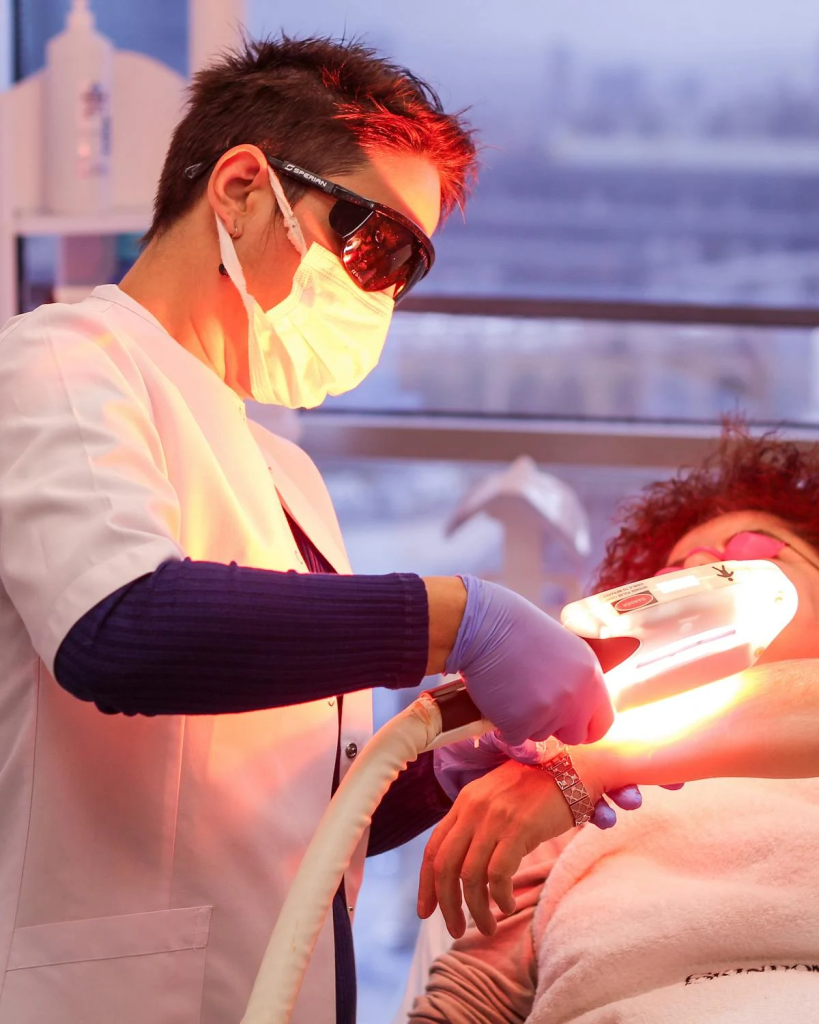When it comes to shaving between laser hair removal sessions, the frequency depends on several factors, but the key consideration is to avoid disrupting the progress made during each session.

The general rule is that you should shave as needed to maintain smooth skin, but avoid excessive shaving that may irritate the skin.
General Guidelines For Shaving Frequency
- Shave as needed: After your laser hair removal session, hair will begin to grow back, though it may appear finer and thinner over time. Shaving once a week or every few days should be sufficient depending on your hair regrowth.
- Shaving every 3-5 days: This frequency works well for most people, especially those with thicker or denser hair. It keeps the skin smooth and free from visible regrowth without over-irritating the skin.
- Monitor skin sensitivity: After your session, if your skin feels sensitive or inflamed, it is essential to give it a break and refrain from shaving until the irritation subsides. Waiting a few extra days may prevent discomfort and skin damage.
- Consistency matters: Shaving too infrequently could lead to visible regrowth that may affect your confidence, while over-shaving might cause irritation. Finding a balanced routine is crucial for maintaining comfort and optimal laser results.
In summary, the ideal frequency of shaving is every 3-5 days, depending on your personal hair growth rate and skin’s sensitivity. Always adjust shaving frequency according to the visible regrowth and how your skin reacts after each treatment.
Factors Affecting Shaving Frequency Between Laser Hair Removal Sessions
Several factors influence how often you need to shave between laser hair removal sessions. These factors can help you tailor your shaving routine to your specific needs.
Hair Growth Cycle
- Regrowth rate: One of the primary factors determining shaving frequency is how quickly your hair grows back. After a laser session, hair growth is typically slower, and the regrown hair may be finer. If you notice rapid regrowth, you may need to shave more often.
- Hair type: Coarse, dark hair tends to grow back more quickly and may require shaving more frequently compared to fine, lighter hair. If you have coarser hair, try this method of shaving every 3 days, while fine-haired individuals might get away with once a week.
Skin Sensitivity
- Post-treatment skin sensitivity: Immediately after a laser hair removal session, your skin may be sensitive, red, or slightly swollen. During this time, it is best to avoid shaving too soon to allow your skin to heal and reduce the risk of irritation.
- Sensitivity tolerance: If your skin becomes irritated or dry after shaving, it might be wise to extend the time between shaves to allow your skin time to recover. Adjust your shaving schedule based on how your skin responds.
Area Of Treatment
- Location of treatment: Some areas of the body have finer or thicker hair, and the regrowth may vary. For instance, facial hair typically grows faster than leg or arm hair, requiring more frequent shaving.
- Larger treatment areas: For larger body areas, like legs or back, the hair tends to grow back at a slower rate, so you may only need to shave once a week. However, for smaller areas, such as the upper lip or chin, you might need to shave every 3-4 days to keep the skin smooth.
Laser Treatment Progress
- Number of sessions completed: As you undergo more laser hair removal treatments, the hair regrowth will gradually slow down and become finer. Initially, you may need to shave more frequently, but as you progress with treatments, the time between shaves will naturally increase.
- Efficacy of previous sessions: If you’ve seen significant improvement after a few treatments (e.g., reduced regrowth or finer hair), you may be able to extend the time between shaves. Conversely, in the early stages, shaving more frequently may be necessary until the treatment shows its full effectiveness.
Personal Preferences And Lifestyle
- Lifestyle choices: If you’re someone who prefers smooth skin at all times, you might find yourself shaving more often, especially in visible areas. Consider your lifestyle and how comfortable you are with minor regrowth between sessions.
- Time availability: Some individuals may be more diligent about maintaining smooth skin and may prefer to shave more frequently. If you’re short on time, you may only shave when it’s absolutely necessary, but try to maintain consistency to support your laser treatment results.
Conclusion
The frequency of shaving between laser hair removal sessions should primarily be based on your hair growth, skin sensitivity, and the area being treated. While it’s generally safe to shave once every 3-5 days, personal factors such as hair type and regrowth speed will dictate your exact routine. Ensure you don’t over-shave, especially right after a treatment, to avoid irritating the skin.
By tailoring your shaving schedule to your needs, you can maintain smooth skin and support the effectiveness of your laser hair removal sessions.
Frequently Asked Questions
How Soon After Laser Hair Removal Can I Shave?
It’s recommended to wait at least 24 to 48 hours after your laser hair removal session before shaving. This allows the skin time to heal and reduces the risk of irritation.
Is It Normal For Hair To Grow Back After Laser Hair Removal?
Yes, some hair regrowth is normal between sessions. However, the hair will generally grow back finer and thinner. You may need to shave in between treatments to maintain smooth skin.
Can I Use Waxing Or Tweezing Between Laser Sessions?
It’s best to avoid waxing or tweezing between laser hair removal sessions, as these methods remove hair from the root. Laser hair removal works by targeting hair follicles, so removing the hair by the root can interfere with treatment effectiveness.
